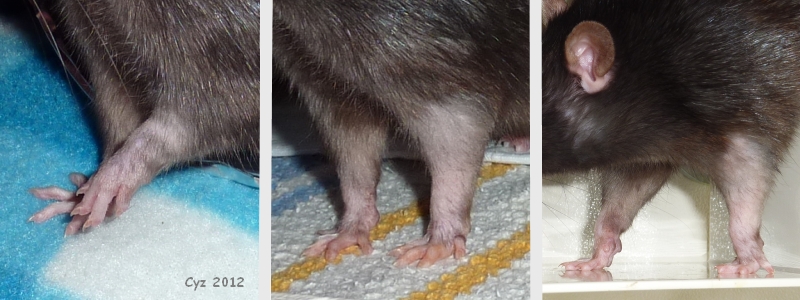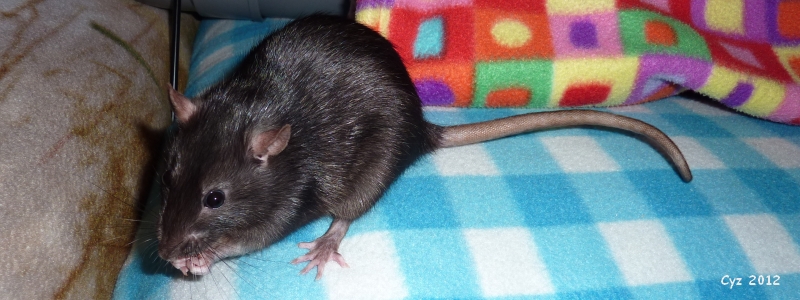Figure 3: Barbering of forelimbs in 6-month-old female rat (Luna).
Case history and photos
History
Luna (black self) and her sister are surrendered to a local rat rescue by their previous keeper. They are intact females approximately 6 months old. They are very friendly and obviously used to handling, although especially Luna reacts skittishly to sudden sounds and movements.
After about three weeks at the rat rescue, during which they area housed as a pair, Luna and her sister are adopted as company for an adult (castrated) semi-wild male rat. A few months later, two young semi-wild female rats are added to the group. During the first introduction Luna receives a bite wound by the adult male, but the introduction is completed successfully and no injuries have occurred since. She generally gets along well with the other rats.
The rat group lives in a large cage: “Uni-Dom 3”, which consists of three vertical sections, each with a floor surface of 90x56cm and height of 56cm. In addition, for several hours a day they have free access to a fully enriched enclosed playpen of appr. 3x3m.
Clinical Signs
From the moment of her adoption, Luna’s forelimbs – from the backs of her hands almost up until her elbows – are scarcely furred. The skin is not damaged. Obsessive grooming (either by herself or a cagemate) is not observed, but this may occur at times when there is no supervision.
Diagnosis
The assumption is that Luna is “self-barbering” her forelimbs.
Potential causes that can be ruled out (at least in Luna’s current home) are:
- loneliness
- lack of space
- lack of houses and toys
Potential causes that cannot be ruled out are:
- stress related to moving (from previous home to rat rescue to new home)
- stress related to the two introductions, especially since there are still occasional squabbles, mainly between the adult and young females
- stress that is picked up from the other rats; note that three out of five are semi-wild, and that there is no completely docile “example” to copy
Treatment
There is no specific treatment against barbering.
The group is monitored to ensure that the squabbles do not get out of hand.
Outcome
There appears to be some variation in the extent to which Luna barbers her forelimbs: it seems to be increasing. This could be due to the young females becoming teenagers, and increased stress due to accompanying arguments over the dominance hierarchy.
Photos
 Photo 1 taken Nov. 2011, photo 2 taken Feb. 2012 and photo 3 taken April 2012 show hair loss from both forelimbs, over the course of five months, as a result of being over-groomed. |
 Full body view of Luna. Hairloss from the forelimbs still continues to be seen. |
Case history and photos courtesy of Cyzahhe


